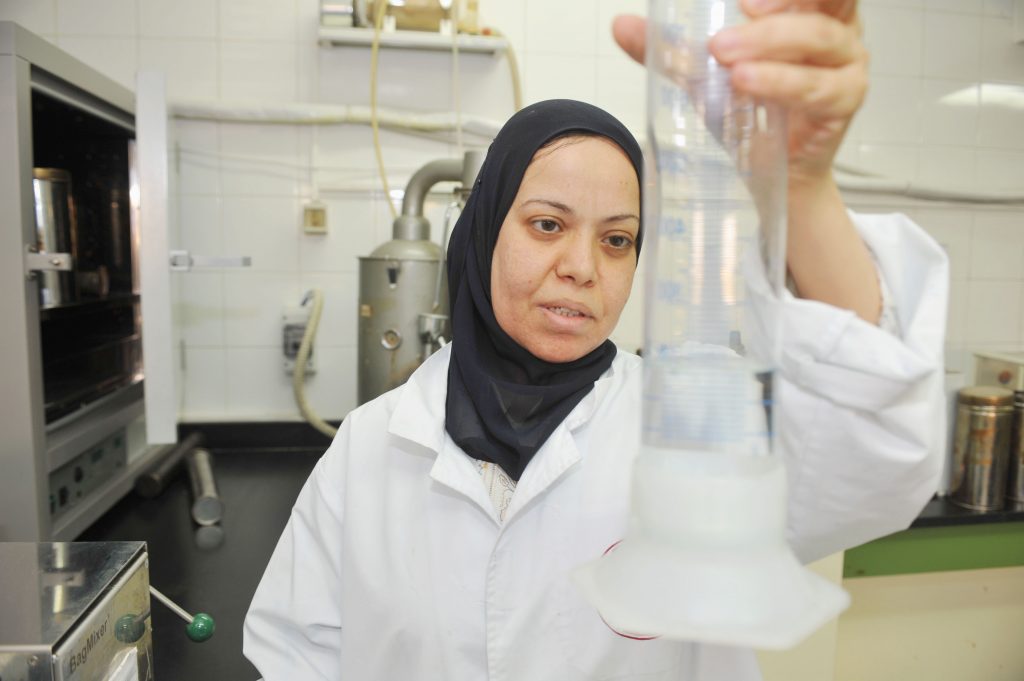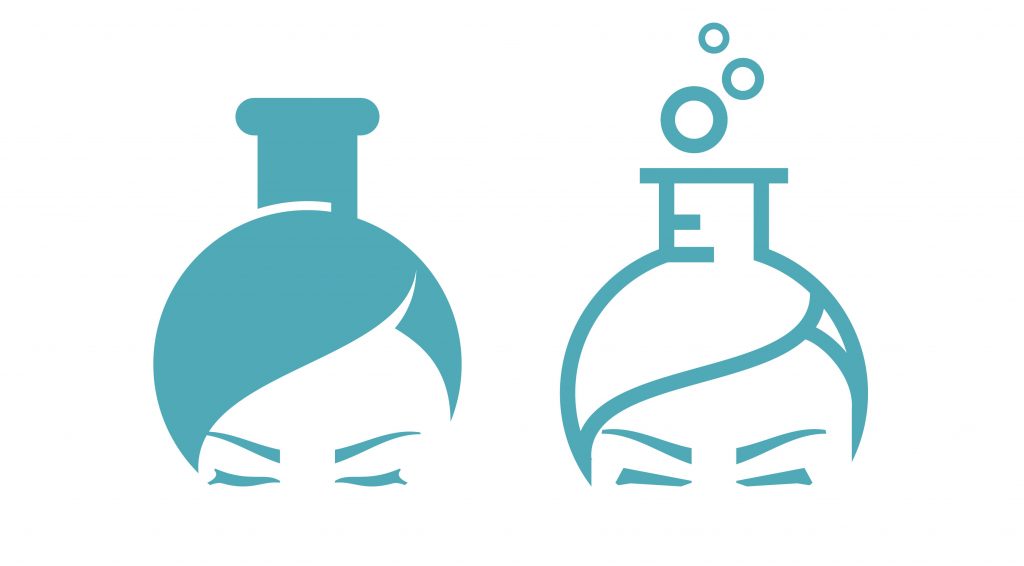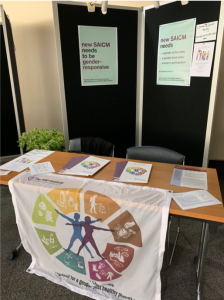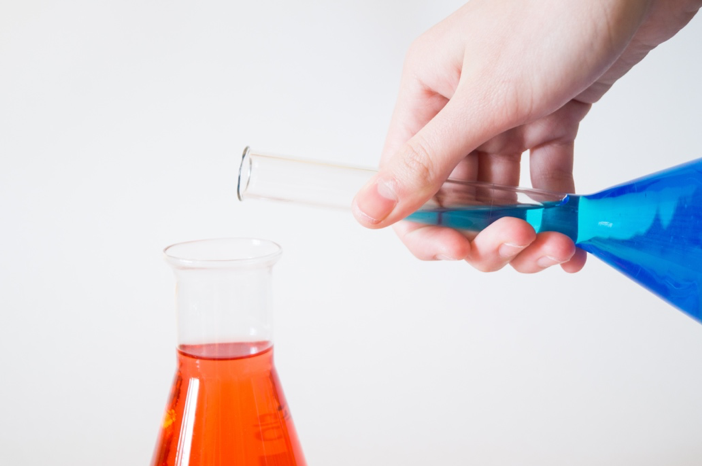#GenChemRoadMap
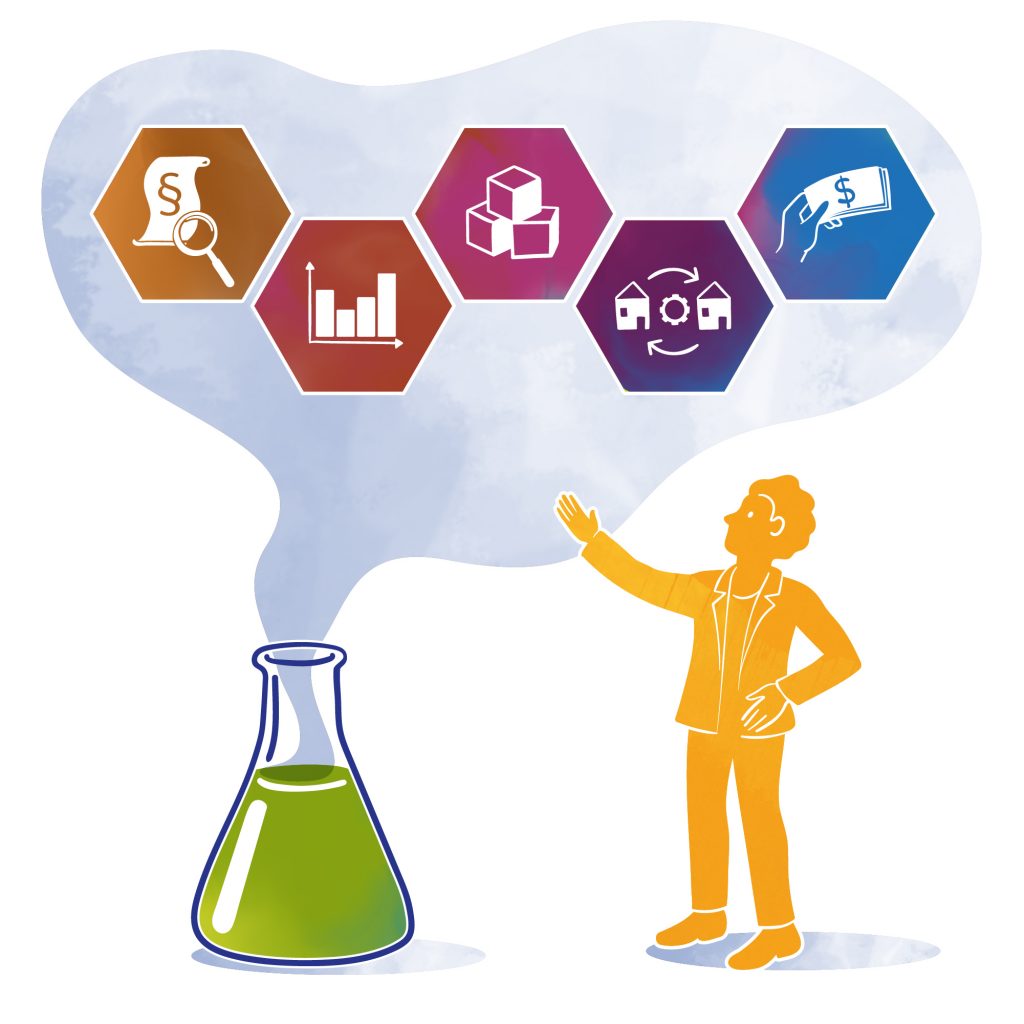
German Version below
Introducing our new project GenChemRoadMap
Gender Mainstreaming is “the process of assessing the implications for women and men of any planned action, including legislation, policies or programmes, in all areas and at all levels. […]” (ECOSOC 1997). In terms of chemicals management, this means that gender aspects must be considered at all levels of chemicals policy. At the international policy level, there are increasing efforts and discussions on how gender should be included in the international chemicals and waste management beyond 2020 (the SAICM Beyond 2020-Process). In the negotiations, we and our colleagues from other (women’s) organisations have been advocating on gender and women’s issues for several years and expect a clear and strong commitment to gender equality at the SAICM ICCM5 conference and in the outcome documents!
Even though such a commitment is urgently needed, the real implementation must take place at the national and local level! However, gender mainstreaming concepts for national chemicals policy or gendered legislation hardly exists.
A brief research reveals two publications:
– an overview study of gender and chemicals management in Tanzania (2016); and
– a scientific paper on sex and gender in Canada’s chemicals management (2014),
yet there seem to be no official strategy documents or information about activities by governments.
This is not really surprising as we are unfortunately still in the early stages of integrating gender into environmental and sustainability policy. However, change is underway: in the policy fields of climate change or biodiversity conservation, governments have agreed that gender aspects must be considered in the respective national strategies and action plans, and since 2019, several countries have a national gender and climate change focal point. The chemicals community can and should build on these experiences!
During an online discussion of the Chemicals and SDGs Community of Practice in September 2020, participants discussed the implementation of gender mainstreaming into national policies:
– 87,5% of the participants thought gender inequalities related to the management of chemicals and waste exist in their countries.
– To change this, most participants thought that the development of a gender action plan and additional research on chemicals and gender would be significant.
– But in more than 50% of the countries, gender mainstreaming is not considered in environmental and health policies yet, and no gender experts or women’s organizations are involved in chemicals management at the national level.
(see the summary of the discussion: SAICM Secretariat/ University of Cape Town: 2020).
This urgently needs to change – otherwise, gender inequalities will remain one cause for ineffective and unjust chemicals management. That’s why we developed a “Gender Road Map”, a short guidance for a gender-responsive national chemicals policy for SAICM National Focal Points, and discussed it with the Community of Practice last year. The response was positive, and all participants indicated that such a road map might encourage SAICM focal points to integrate gender in their national chemicals management.
This year, we want to take it one step further: in our new project “GenChemRoadMap”, supported by the German Environment Agency. We want to create a training workshop and training materials based on this Gender Road Map, and we will advise the German SAICM Focal Point when taking its first steps towards implementing it. Experiences, challenges and successful elements of this pilot project will be discussed at the international level to enable mutual learning and encourage implementation activities in other countries.
We are looking forward to the new project and believe that gender-responsive national chemicals management is urgently needed, and gender mainstreaming should be an essential task of all National SAICM Focal Point in the future!
If you are interested in our new project GenChemRoadMap, or you want to share and discuss questions, experiences and ideas, feel free to contact us: anna.holthaus[at]msp-institute.org
If you want to stay informed about the project, its activities, events and results, please sign up for our newsletter: http://gender-chemicals.org/newsletter
Warum Gender im nationalen Chemikalienmanagement berücksichtigt werden muss – und wie wir in Deutschland versuchen wollen, erste Schritte zu gehen
– unser neues Projekt GenChemRoadMap –
Gender Mainstreaming ist “der Prozess, bei dem die Auswirkungen jeder geplanten Maßnahme, einschließlich Gesetzgebung, Politik oder Programme, in allen Bereichen und auf allen Ebenen auf Frauen und Männer geprüft werden“. Auf das Chemikalienmanagement bezogen bedeutet dies, dass auf allen Ebenen der Chemikalienpolitik Genderaspekte Beachtung finden müssen. Auf der internationalen Politikebene gibt es diesbezüglich verstärkt Bemühungen und Diskussionen, wie Gender im internationale Chemikalien- und Abfallmanagement nach 2020 (der SAICM Beyond 2020– Prozess) einbezogen werden soll. In den Verhandlungen sind wir gemeinsam mit unseren Kolleg*innen anderer (Frauen-)Organisationen seit mehreren Jahren aktiv beteiligt und erwarten ein klares und starkes Bekenntnis zu Geschlechtergerechtigkeit auf der SAICM ICCM5-Konferenz und in den Ergebnisdokumenten!
Aber auch wenn ein solches Bekenntnis dringend notwendig ist, muss die eigentliche Umsetzung auf der nationalen und lokalen Ebene erfolgen. Konzepte für die Integration von Gender Mainstreaming in die nationale Chemikalienpolitik oder eine geschlechtergerechte Gesetzgebung gibt es bisher jedoch kaum.
Bei einer kurzen Recherche findet man zwei Publikationen:
– Eine Übersichtsstudie zu Gender und Chemikalienmanagement in Tansania,
– und ein wissenschaftliches Papier zu Gender im kanadischen Chemikalienmanagement,
aber keine offiziellen Strategiedokumente oder Informationen über Aktivitäten von Regierungen. Dies sollte nicht überraschen, da wir uns leider noch immer in der Anfangsphase der Integration von Gender in Umwelt- und Nachhaltigkeitspolitik befinden. Aber es tut sich etwas: In den Politikfeldern Klimawandel oder Biodiversität müssen Genderaspekte in den jeweiligen nationalen Strategien und Aktionsplänen berücksichtigt werden und seit 2019 haben mehrere Länder eine nationale Gender- und Klimaschutzbeauftragte. Die Chemie-Community kann und sollte auf diesen Erfahrungen aufbauen!
Während einer Online-Diskussion der Chemicals and SDGs Community of Practice im September 2020 diskutierten die Teilnehmenden die Umsetzung von Gender Mainstreaming in nationalen Strategien:
– 87,5% der Teilnehmenden waren der Meinung, dass in ihren Ländern geschlechtsspezifische Ungleichheiten im Zusammenhang mit dem Umgang mit Chemikalien und Abfällen bestehen.
– Um dies zu ändern, hielt eine Mehrheit der Teilnehmenden die Entwicklung eines Gender-Aktionsplans und zusätzliche Forschung zu Chemikalien und Gender für besonders wichtig.
– Aber in mehr als 50% der Ländern der Teilnehmenden wird Gender Mainstreaming in der Umwelt- und Gesundheitspolitik noch nicht berücksichtigt; und auf nationaler Ebene sind keine Gender-Experten oder Frauenorganisationen in das Chemikalienmanagement eingebunden (siehe die Zusammenfassung der Diskussion: SAICM-Sekretariat/ Universität Kapstadt: 2020).
Dies muss sich dringend ändern – sonst bleiben geschlechtsspezifische Ungleichheiten eine der Ursachen für ineffektives und ungerechtes Chemikalienmanagement. Deshalb haben wir eine “Gender Road Map” entwickelt, einen Entwurf einer Kurzanleitung für eine geschlechtergerechte nationale Chemikalienpolitik für SAICM National Focal Points. Als wir den Entwurf im letzten Jahr mit der Community of Practice diskutierten, war die Resonanz positiv und die Teilnehmenden meinten, dass eine solche Roadmap nationale SAICM Focal Points ermutigen könnte, Gender in das nationale Chemikalienmanagement zu integrieren.
In diesem Jahr wollen wir einen Schritt weiter gehen: in unserem neuen Projekt “GenChemRoadMap”, das vom deutschen Umweltbundesamt unterstützt wird, wollen wir einen Trainingsworkshop und Trainingsmaterial basierend auf dieser Gender Road Map erstellen und den deutschen SAICM Focal Point bei seinen ersten Schritten und Aktivitäten zur Umsetzung unterstützen. Erfahrungen, Herausforderungen und Erfolge dieses Pilot-Projektes sollen daraufhin auf internationaler Ebene vorgestellt werden, um gegenseitiges Lernen zu ermöglichen und Umsetzungsaktivitäten in anderen Ländern zu fördern.
Wir freuen uns auf das neue Projekt und sind der Überzeugung, dass ein geschlechtergerechtes nationales Chemikalienmanagement dringend benötigt wird und Gender Mainstreaming in Zukunft eine wichtige Aufgabe aller nationalen SAICM Focal Points sein sollte!
Wenn Sie sich für unser neues Projekt GenChemRoadMap interessieren oder Fragen, Erfahrungen und Ideen austauschen und mit uns diskutieren möchten, können Sie uns gerne kontaktieren: anna.holthaus[at]msp-institute.org
Wenn Sie über das Projekt, die geplanten Aktivitäten, Veranstaltungen und Ergebnisse auf dem Laufenden bleiben möchten, tragen Sie sich hier in unseren Newsletter ein: http://gender-chemicals.org/newsletter





